Continuing the ongoing series of interviews with creative artists working on various aspects of movie and TV productions, it is my pleasure to welcome Tamara Deverell. In this interview she talks about the art and craft of production design, the transition of the industry from film to digital, production shifts as more stories are told on streaming platforms, doing research in the digital age, and the impact of the ongoing pandemic on her industry. Around these topics and more, Tamara dives deep into her work on the recently released “Nightmare Alley”.
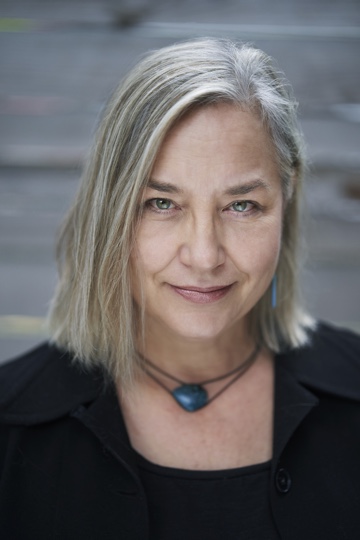 Kirill: Please tell us about yourself and the path that took you to where you are today.
Kirill: Please tell us about yourself and the path that took you to where you are today.
Tamara: I was an art student, studying just about everything I could manage to put my hands on in art school: printmaking to painting to sculpture to photography to filmmaking to art history. I had incredibly wide-spread interests and talents, I was lost looking for some kind of career wherein I could explore and use all my creativity. My father, a writer, thought that somebody with my all-encompassing skills and interests could do well in the film industry – and he was right.
I started working in film in the costume department on a small Canadian production, and through that experience I was exposed to the art department that I never really thought about. Some crew member saw that I was artistically inclined and talented, and I was introduced to the production designer François Séguin, a Canadian designer. I got my start working with François in Montreal and then, after a move to Toronto, with another Canadian designer, Carol Spier (of David Cronenberg fame). I worked my way up from set and graphic designer to Art Director as part of Carol’s team working on the David Cronenberg films: “eXistenZ” and “Crash”, as well as Guillermo del Toro’s “Mimic”. That was my beginning.
Kirill: If I can bring you back to late ’80s or early ’90s when you were starting in the industry, and then jump all the way to the present day, are there any big differences between how feature films were made back then and now?
Tamara: The sentiments of the storytelling process are the same, but the process and the logistics of creating films now are very different from when I’ve started. I feel that my generation has witnessed a tremendous transformation of the way everything is done, and movies in particular.
I’ve seen the rise of the digital age in my work in the art department. As an example: back then we were doing Letraset, cut and pasting and photo processing to create a prop newspaper. Everything was hand drafted, and I’m still one of the few people in my industry that does still can do hand drafting. However, I don’t do a lot of drafting these days, as I have a team of excellent set designers who I work with to create final models and plans. When I first started, I was hand drafting and hand illustrating from start to finish. I still do the hand drafting, but these days I tend to do it on a digital platform, like drawing on an iPad on an emulated “gridded” paper.
It’s been an exciting time to have a career in film as our worlds have expanded so much. There’s AR (Augmented Reality) walls and all sorts of digital technology. When you’re designing a film, you have to know just as much about VFX as your VFX team partners and leaders do. It’s a new world of digital information and technology.
Still though, we’re still trying to tell stories that are epic, or human, or fantastical, and those parameters of good storytelling will always remain the same.

Production design sketches and notes for “Nightmare Alley”, courtesy of Tamara Deverell.
Kirill: Speaking of the new worlds, you’ve done a few episodic productions in the last several years. Did it catch you by surprise how quickly the industry has expanded into the premium streaming / episodic space, perhaps at the expense of mid-budget feature films?
Tamara: I’m not really surprised about that. The platforms are changing radically. I hope people will always want to see movies in theatres, but TV screens keep on getting bigger and better, and this pandemic certainly changed a lot of things. People want access to entertainment in their own homes, and now it’s become even more prevalent because people have been stuck at home.
It’s shifting, and the best thing for filmmakers is to shift with it, and not to fight it. Cinema and television have become so closely entwined, both can provide high quality visual experiences. When I work in television, I try to imbue it with the same level of detail as I would on a feature film where you see it in that large-scale format, because a lot of people are watching that largescale television. I worked on “Star Trek Discovery”, an episodic television production, and it was the same level of detail, and desire to create new worlds and present audience with fantastic sets as I would in a feature film. It’s not a huge difference for me anymore.
When I first started in the industry, there was this clear line between the two. You do TV, and you can get away with things. You do a movie, and you pay attention to every minute detail. Not anymore.
Kirill: Would you say that a movie like “Nightmare Alley” needs to be seen on a big screen?
Tamara: I would. It was such a particularly intense experience, such a heavily art directed movie, and the visuals are so important. That goes for all of Guillermo’s films, they have this intrinsic visual value that is worthy of a large screen. There is so much detail in aging, textures and tones, and I want people to be able to look at that on a big screen.
Kirill: And then on the other end of the screens spectrum, you have some people that watch these stories on their phones, perhaps not even in one go.
Tamara: If I see somebody watching “Nightmare Alley” on that tiny, badly calibrated airplane screen, I know that they didn’t really see it. I would be disappointed for them, as it’s such a fundamental difference. When I’m doing a project, I’m still paying the same amount of mind and attention to it, there is no difference between TV and big screen films in the level of strong visuals that I wish to create.
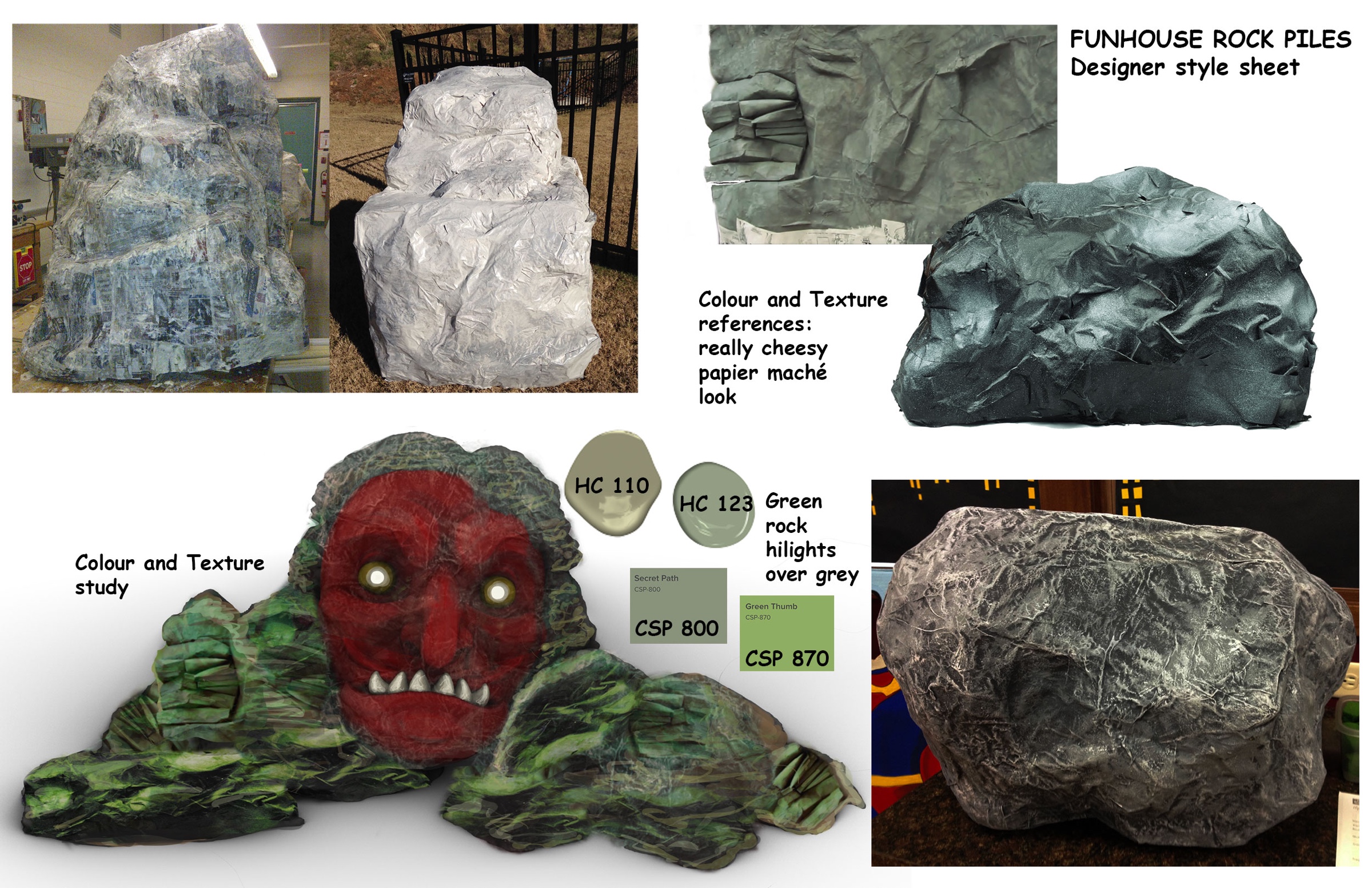
Production design sketches and notes for “Nightmare Alley”, courtesy of Tamara Deverell.
Continue reading »
Continuing the ongoing series of interviews with creative artists working on various aspects of movie and TV productions, it is my pleasure to welcome Ricardo Diaz. In this interview he talks about the art and craft of cinematography, the transition of the industry from film to digital, the variety of screens on our lives, and the impact of the ongoing pandemic on his industry. Around these topics and more, Ricardo dives deep into his work on the recently released “Texas Chainsaw Massacre”.
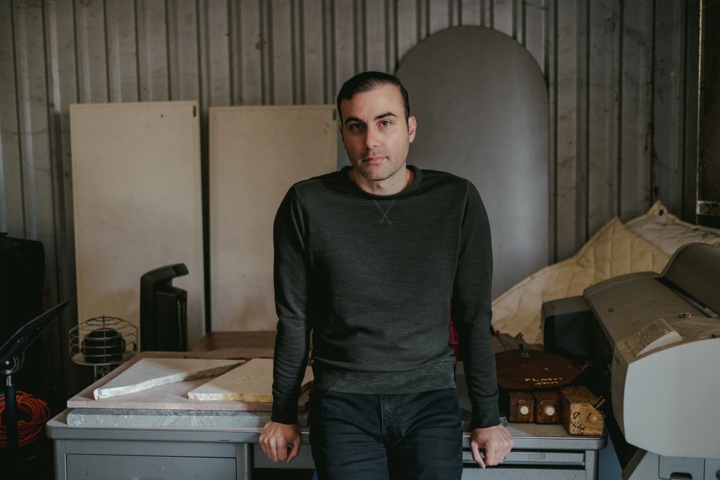
Kirill: Please tell us about yourself and the path that took you to where you are today.
Ricardo: I’m Ricardo Diaz, originally from a small town in South Texas, and I’m a cinematographer based out of Los Angeles. I am where I am today because I love movies. I grew up in a part of the world where there wasn’t a whole lot of things to do with your spare time, and my family really loves the cinema. So growing up, I watched a lot of movies with them. We went to the movie theater all the time, and it was one of the many bonding moments that we had, watching a movie and then talking about it.
At some point my passion for it made me realize that this is something that could be turned into a living. I happened to be growing up at a time when analog was already shifting to digital in the consumer market. You could access software that allowed you start cutting digital footage and just experiment. It became accessible to me when I was young, thanks to the internet, Apple computers, and MiniDV cameras.
The movie that made me want to make movies was “Superman” by Richard Donner. At one point I went back and watched it again, and I remember seeing that it was dedicated to Geoffrey Unsworth. I didn’t know who he was and what he did, but thanks to the internet I looked him up, and he turned out to be the director of photography on the movie. Then I went down the rabbit hole of the internet as to what that position was, and it really was in sync with all the things I loved about making these videos with my friends and family.
It was crafting the illusion, crafting the magic of cinema. It’s this blend of craft and artistry. It’s painting with light. And at that point I knew that I wanted to be a cinematographer. That is the path that I wanted to take, and I’ve pursued that relentlessly for the last 20 years. That is how and why I am here today, with a lot of support from my family who really encouraged me to pursue this.
Kirill: Do you feel that the transition from film to digital is complete, and perhaps there is no longer a debate on relative merits? Has the industry accepted, so to speak, that digital is the default choice?
Ricardo: I am of the opinion that it is a tool, and that they are both just matters of taste. And neither of them is right or wrong at this point.
Digital has caught up. It’s indisputable that you can make a digital image just as atmospheric, beautiful, and magical as film. Steve Yedlin has certainly proved time and time again that you can absolutely trick the eye using digital tools and digital capture to make it look almost imperceptibly different from film. So it’s really a matter of creative taste and vision, and there isn’t a right or wrong answer at this point. If you’re Christopher Nolan and you want to shoot film, shoot film. If you’re Sean Baker and you want to shoot 16mm and that’s right for your project, shoot Super 16. And if you want to make “The Avengers” and shoot on digital capture, do that.
There is no wrong answer. Every project is different, and it calls for something specific and unique for the creators. That’s where we’re at.
I almost feel like the transition to digital is so complete that many artists are trying to sneak some film back into the world just because they miss it. It’s this full circle situation where the past decade has seen digital become so dominant, and some people want to come back to film and try it again. That’s how you know the cycle is complete.
Kirill: Is this debate strictly confined to tighter circles within the industry? Is that something that the larger audience does not spend too much time thinking about?
Ricardo: It probably depends on the age range of the audience you’re speaking to. If you take somebody in their late teens or early twenties, and you ask them if it matters that “Texas Chainsaw Massacre” is shot on 16mm the way the original was, you’ll hear that it doesn’t really matter to them.
The debate has raged on within tighter circles, but it’s quieting down a bit over the last few years. There are still a few famous and very vocal proponents carrying the flag, and I’m glad they are. I never want film to die. It’s another tool in the toolkit. It’s another canvas to paint on. We need to have different tools and different canvasses available to us, and it would be awful to lose that. But at this point, especially for younger audiences, most viewers don’t care about the medium itself. Of course you still have cinephiles of a certain age that are purists, and it has to be on film, and it has to be flickering 24 times a second. That is what the cinema is for them, and it still matters for them.
But in general, audiences want to be taken on an emotional ride. They want to escape for a few a bit, or be engaged for a bit, and the canvas just needs to be right for that story to them.
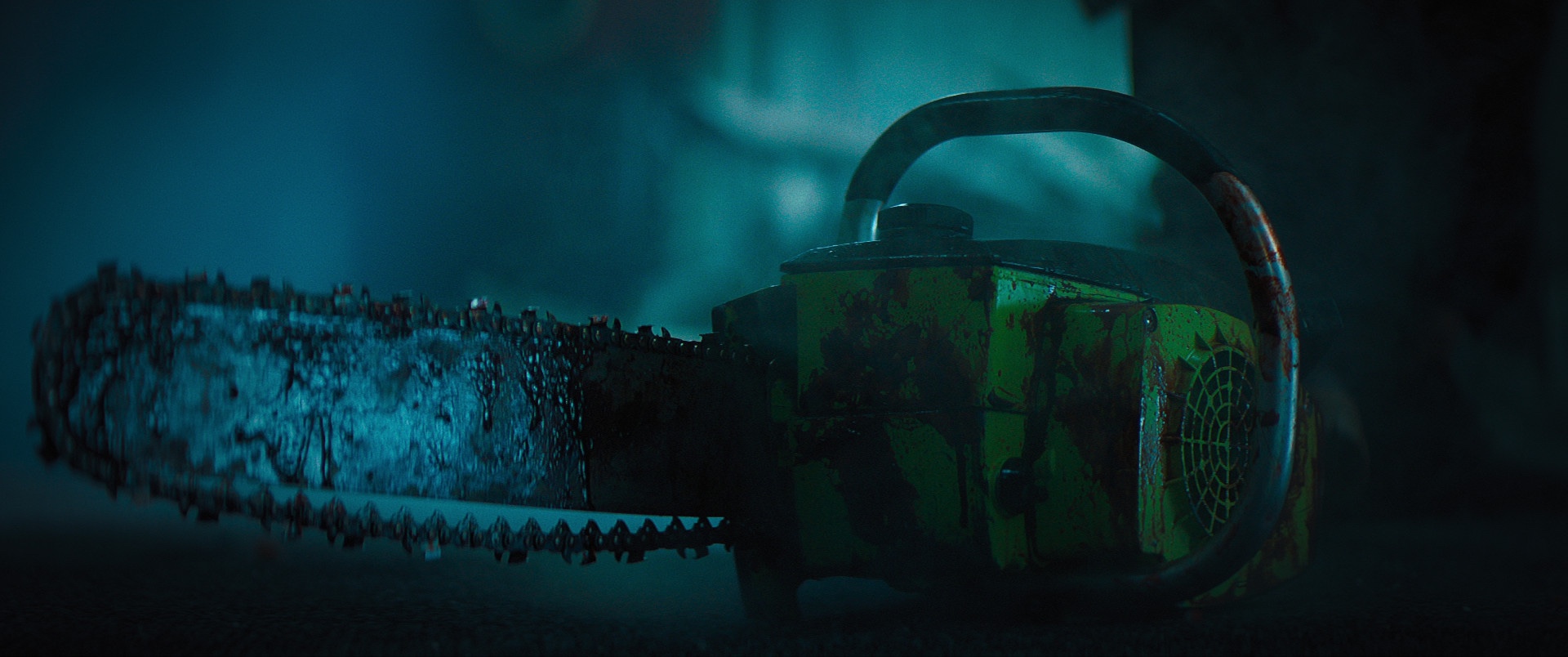
“Texas Chainsaw Massacre” 2021, copyright Legendary, courtesy Netflix.
Kirill: Speaking of the canvas, I was watching the movie yesterday on my laptop instead of going downstairs and watching it on the bigger TV screen. Do you think that as an audience member I am missing something when I do see it on this smaller screen?
Ricardo: I think you are missing some things when you watch these films, especially those released in 2.39:1 aspect ratio. We, the filmmakers, put so much love and care into the details that make an image feel believable, or gruesome, or beautiful – whatever aim we are going for. There’s a lot of detail in that and it’s a sum of its parts. The smaller you are watching that image, the harder it becomes to see and feel like you’re getting those details.
Now I won’t specify what size at which you lose the ability to really see the details, but there definitely is an argument to be made about seeing it on as big a screen as possible in order to lose yourself in that illusion. I definitely hope that they don’t let you play Netflix movies on your Apple Watch at some point, because that would be disappointing.
I would always encourage you to see it on the biggest canvas as possible. And if for you that was your laptop, then great. I’m glad it was your laptop and not your phone. And if it was your phone, I hope it was an iPhone 13 Pro Max and not an iPhone Mini. It’s really about encouraging you to watch it on as big a screen as possible!
Continue reading »
Continuing the ongoing series of interviews with creative artists working on various aspects of movie and TV productions, it is my pleasure to welcome Etzel Ecleston. In this interview she talks about the art and craft of makeup, and her work on “Archive 81”.
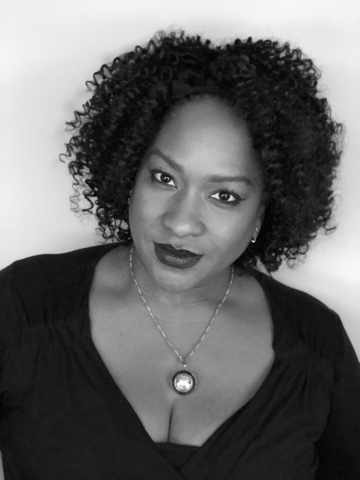 Kirill: Please tell us about yourself.
Kirill: Please tell us about yourself.
Etzel: My name is Etzel Ecleston, and I was one of the Department Heads on “Archive 81”. It was brought to my attention that a Key Makeup Artist’ position was available due to the initial Makeup Department Head moving on to another project. I was referred to the project by fellow colleagues as they knew this is the type of makeup genre that I truly enjoy. It has action, suspense and it has special effects as well.
While filming the last couple of episodes, an opportunity came up where I was promoted to Makeup Department Head.
Kirill: And stepping back a little bit towards the beginning of your career, what brought you into the field of makeup, and more specifically into doing makeup for visual storytelling?
Etzel: I started out at the MAC cosmetics counter as a makeup artist, and there I fell in love with being able to change someone’s emotions if they were feeling down prior to doing their makeup. That was a good practice to speak to people and to have a multitude of people in one’s makeup chair.
After 2-3 years I found that as I was binge watching movies, and I was sitting all the way through the end credits to see who did the makeup. A lot of people like myself watch Marvel movies and stay for the post-credit scenes, but I was also doing that to see the makeup department credits. I wanted to be a part of the entertainment industry, and I became involved in independent films. I joined the makeup union, which opened the doors to meet amazing people within the entertainment industry, and to get referred for amazing projects that I have been blessed to be working on.
Kirill: As you joined the industry and saw the behind-the-scene making of the movie magic, has it reduced in any way your enjoyment as a viewer?
Etzel: I like being able to see how things are broken down. I love contributing to these stories, and I love being able to see how a story comes together. There is no disappointment or loss of enjoyment in seeing how that magic is made. I love being a part of this collaborative effort.
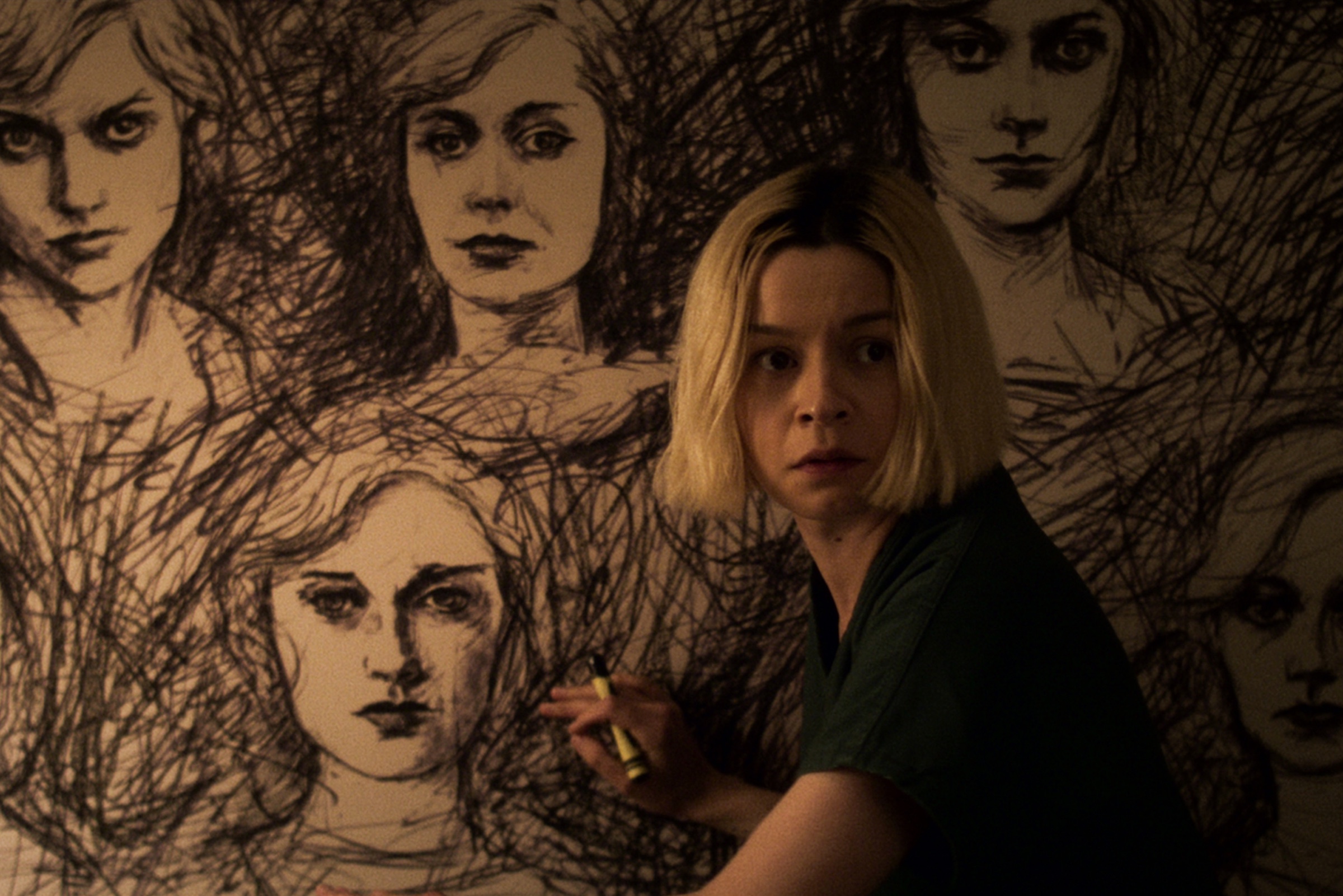
Julia Chan as Anabelle Cho in episode 108 of “Archive 81”. Courtesy Netflix.
Kirill: Our home screens keep on getting bigger and higher resolution. Do you find that you need to do more, or maybe do things a bit differently as both digital cameras and our screens are getting that much more detailed?
Etzel: It definitely depends on what the character calls for. Certain executive producers and directors don’t like seeing a lot of makeup on the actors for specific scenes of the characters being portrayed. As a makeup department head, you have to remember what the director is asking for, and sometimes have to compromise remembering the cameras have much higher resolutions.
On “Archive 81” we have Melody Pendras placed in 1994, and her makeup was designed with the idea that she is a graduate student who doesn’t have a lot of money, but who still wants to look presentable. Then, that drives the choice of specific products on her face that would also look historically correct. Generally, it’s about what the character is calling for.
Kirill: Do you find that natural look is something that people assume is easier to do compared with more elaborate period makeup?
Etzel: Sometimes it is perceived that way by people who are not in the entertainment industry or are not makeup artists. In my opinion, it is not quite so. We have higher resolutions, such as 4K, and sometimes you do have to do a little bit more work for the person to look completely “natural” and the products that you use have a big influence on that.
Continue reading »
Continuing the ongoing series of interviews with creative artists working on various aspects of movie and TV productions, it is my pleasure to welcome Martim Vian. In this interview he talks about the art and craft of cinematography, the transition of the industry from film to digital, his love of storytelling, and the impact of the ongoing pandemic on his industry. Around these topics and more, Martim dives deep into his work on “Voir”, a series of visual essays celebrating cinema.
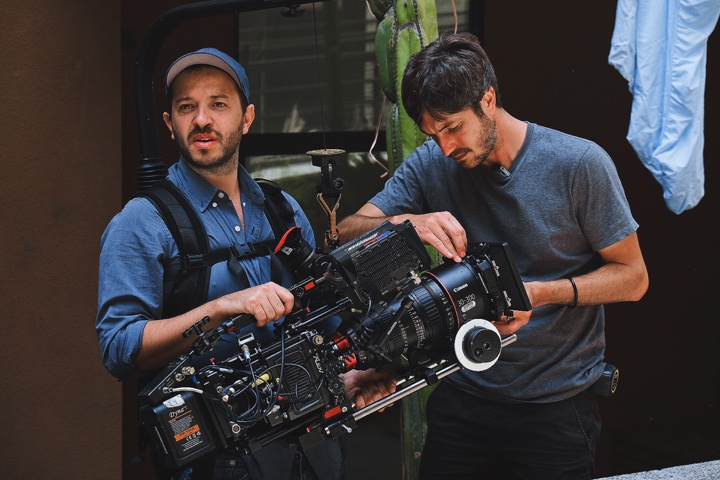
Martim Vian (left) on set.
Kirill: Please tell us about yourself and why you wanted to be a part of this field.
Martim: I grew up in Lisbon, Portugal and I have wanted to make movies since I was a kid. I used to say that I wanted to be an animator for Walt Disney because those movies moved me and I wanted to be a part of that process.
As I grew up, that evolved. The movies I was watching started to change, and we started getting these little behind-the-scenes featurettes of big Hollywood productions on cable TV in Portugal. I would record them on VHS and rewind back to whenever the lights or the cameras were in shot because I was fascinated by how it was all done and why they looked so different from the things I could do at home with my Hi8 camera. My interest was shifting into the technical side of filmmaking before I even knew that there was a job called the cinematographer.
As I got older, this dream of being a filmmaker started becoming a little more real, and I enrolled in the National Film School in Portugal. One of the disciplines you could pick was cinematography, so I did. What I loved about it was the marriage between the artistic side of it – the ideas, the storytelling – and the craft – having to be in command of the tools to do it. And that blend really fits the way my brain works. So, that’s how I got into the field of cinematography.
Kirill: Now that you’re in the industry and you know how it works on the inside, does it diminish your enjoyment when you watch a story in a movie theater as that audience member?
Martim: A good movie or a good TV episode will always transport you into the story and the characters. The cinematography is something that I’m obviously particularly interested in when I watch something, but there are movies that I finish and realize I didn’t pay any attention to how it was made – and that’s a good sign. It means the movie transported me to where it needed to.
At the same time, a lot of what brought me into movies and that interest in the technical side makes me particularly interested in this side of filmmaking. So it’s a mix.
There are moments, especially with streaming, where I might rewind something because I want to understand how they did it. That’s where your job kicks in and you become aware of something that’s being done. This happens in a way that I don’t think would if I was a regular viewer, but a good project will always supersede that. And those are the movies that I really enjoy watching, because first and foremost I’m a film lover.
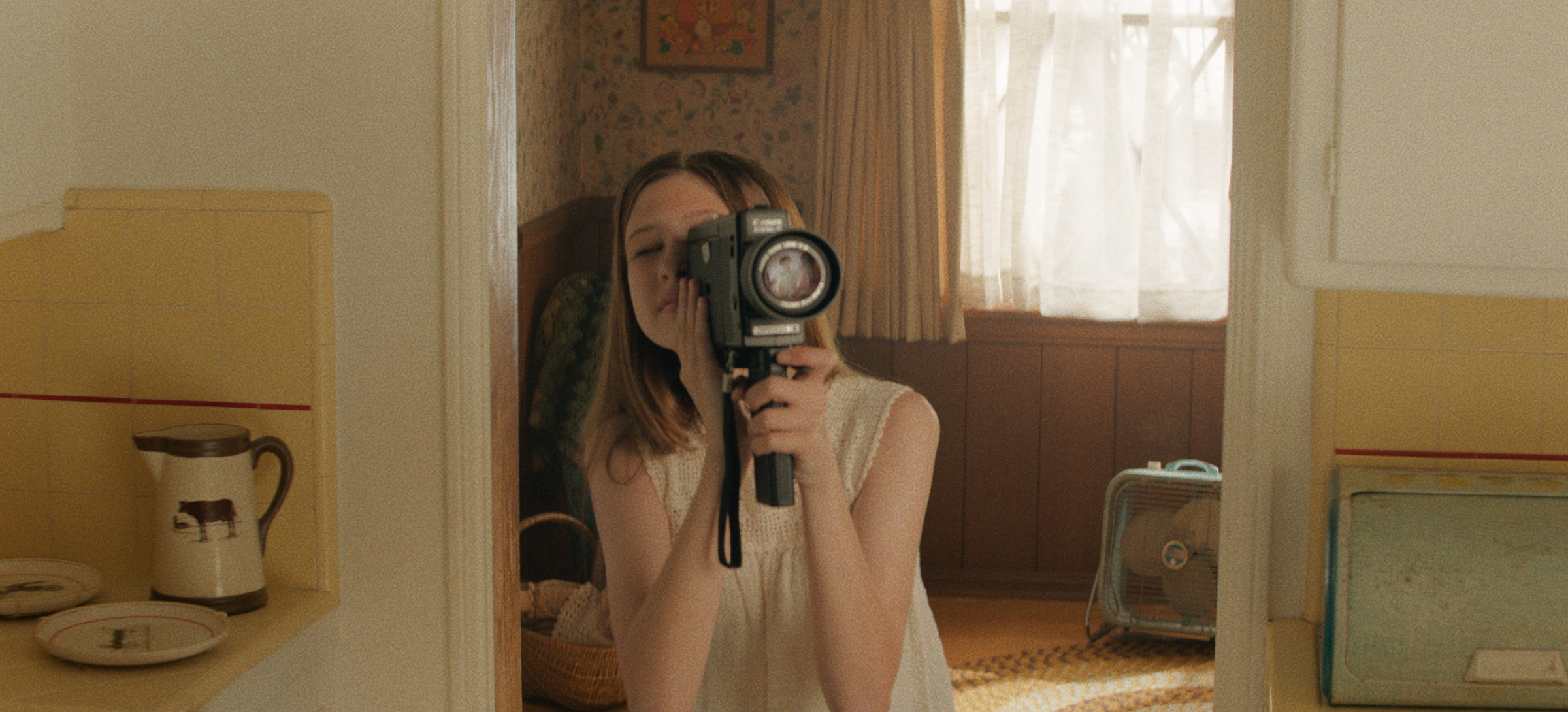
Cinematography of “Voir” by Martim Vian. Courtesy of Netflix.
Kirill: Where do you fall on this spectrum between film and digital as the medium? Would you consider yourself a fully digital citizen of your industry?
Martim: I shoot mostly in digital these days. And most of my professional career as a cinematographer has been digital. I was lucky to work on film in my years in Portugal, both as a student as well as a camera assistant – which I did for five years. So I was lucky to have that experience with film before moving into the digital world.
Digital is in many ways easier to use, and it’s more economical as well. And honestly, most projects simply aren’t able to afford film these days. I love both formats. They both have a place in filmmaking. I don’t think the format has to determine the quality of a movie or series in any way.
I also think they’re just tools. The important thing is to tell a story, to create characters, to move the audience. There was a debate of film versus digital a few years ago, but now I see them as two tools. You pick between two sets of lenses, you pick between different ways you can light a scene, the same way you can pick between film and digital. They’re tools in the box.
And cinematographers, directors, and producers are there to decide where to allocate their resources, where to invest their time and budget, all to better serve the story.
Kirill: Going back to what you said that you love being at this intersection of art and technology, do you place more importance on one of them, or is it a balance between the two?
Martim: It is a balance, but in the end, the technical side needs to be there to serve the artistic side. I have a technical brain, so I enjoy that side a lot, but anything you do at the technical level should serve a purpose for the story. You don’t want your choices to ever feel gratuitous. As far as how they compare to each other, it varies. It varies from moment to moment, from project to project, and from DP to DP.
On one hand the technical side is more quantitative. It’s easier to talk about, to address, to learn, to teach, because it’s math and physics. It’s these things that you can describe to other people. I want a light at this height, at this distance, with this quality – they’re physical characteristics. But the other side of filmmaking is much harder to define and to communicate. It’s also the one that creates a reaction in people.
It’s a balancing act, and the balance itself shifts depending on where you are. Even within the same project there might be a scene where you want to create a space for the actors to perform and not be bogged down by the technical side of filmmaking, so you might design that scene in a way that is technically less complex. You might put all the lights outside the set, for example, so that they can move around freely in that space. And then in the same movie you might have a fight sequence, and those are usually done by shooting little bits of action that only work from a specific angle, and then come together in the edit to make it feel like this thing is happening in sequence when it really isn’t. So, with a scene like that you have to be technical. I find that it depends on the movie, or the scene or the people you’re working with, and what you are trying to achieve. One requires the other. You always need both. It’s just a matter of which one you lean on at that particular moment.
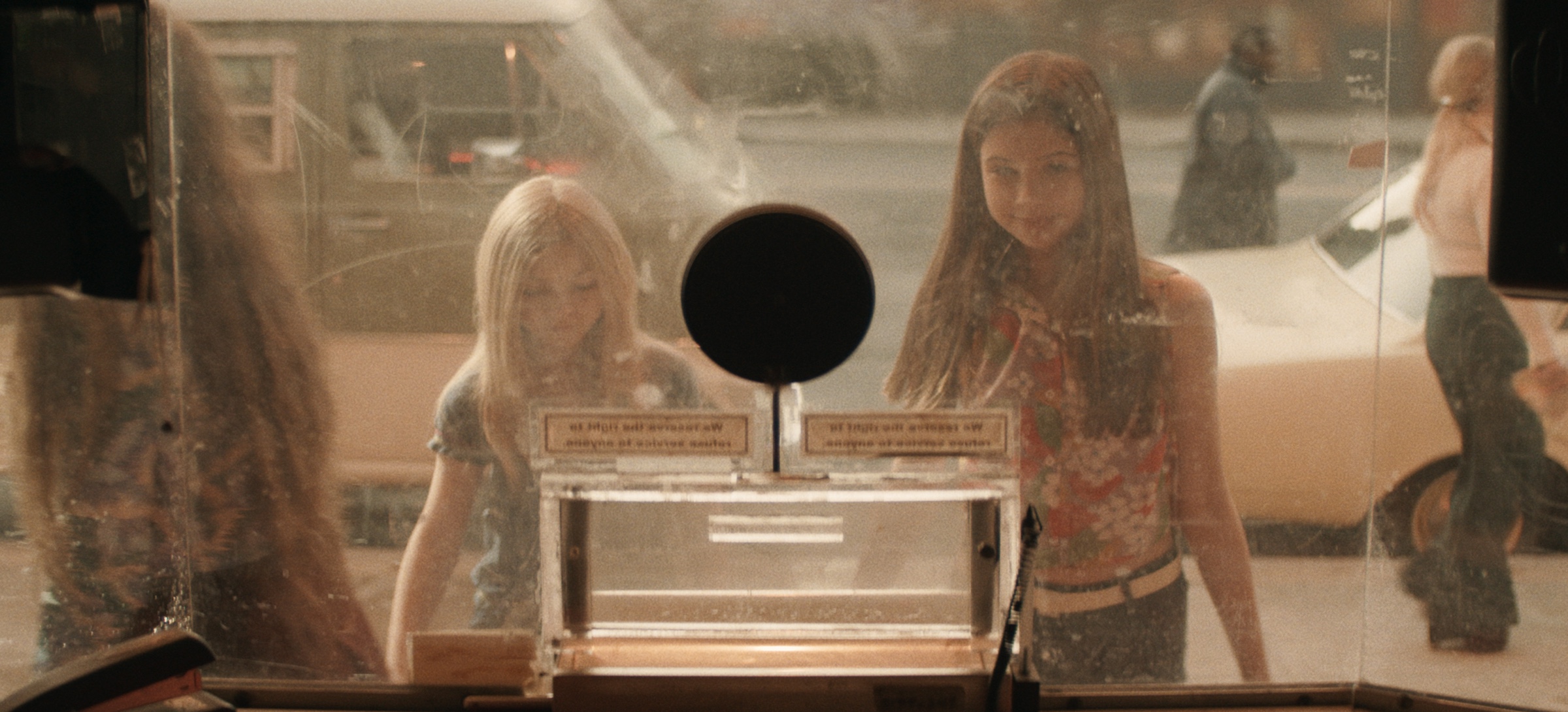
Cinematography of “Voir” by Martim Vian. Courtesy of Netflix.
Continue reading »
![]() Kirill: Please tell us about yourself and the path that took you to where you are today.
Kirill: Please tell us about yourself and the path that took you to where you are today.![]()
![]()